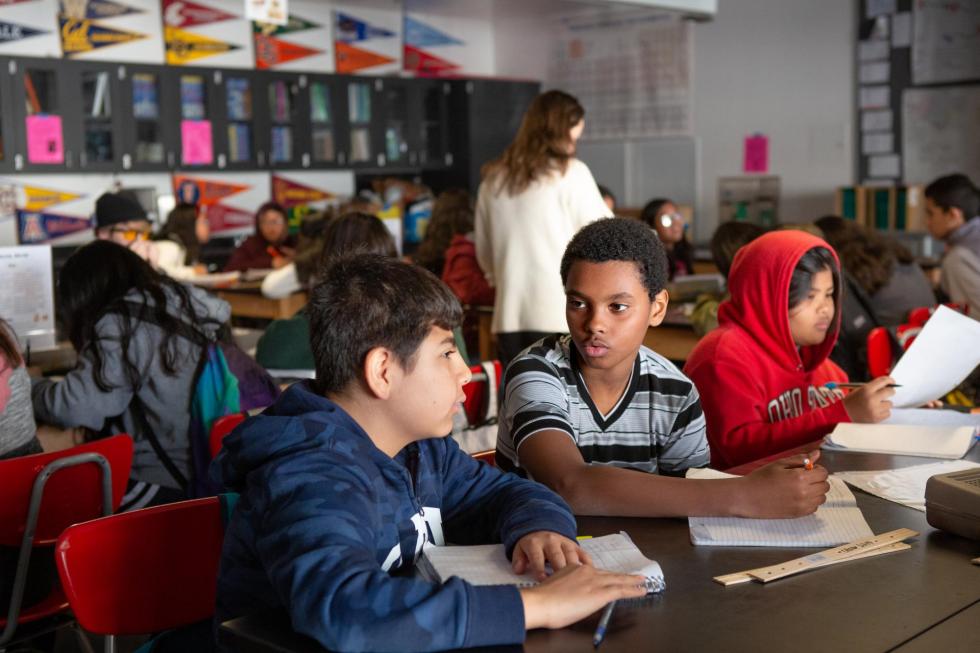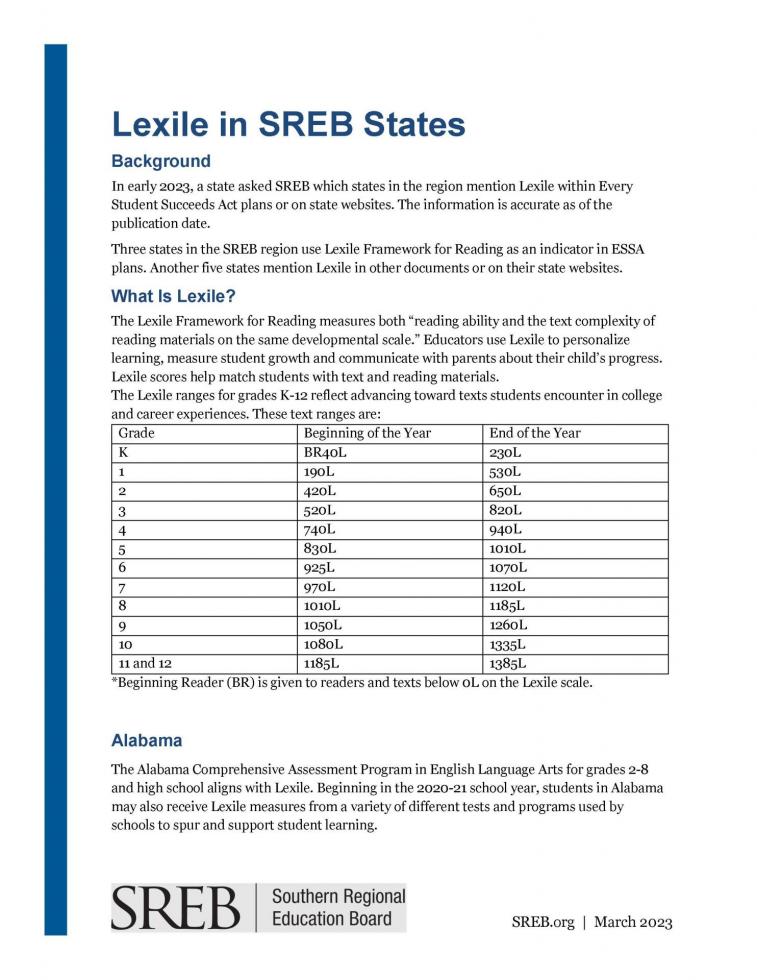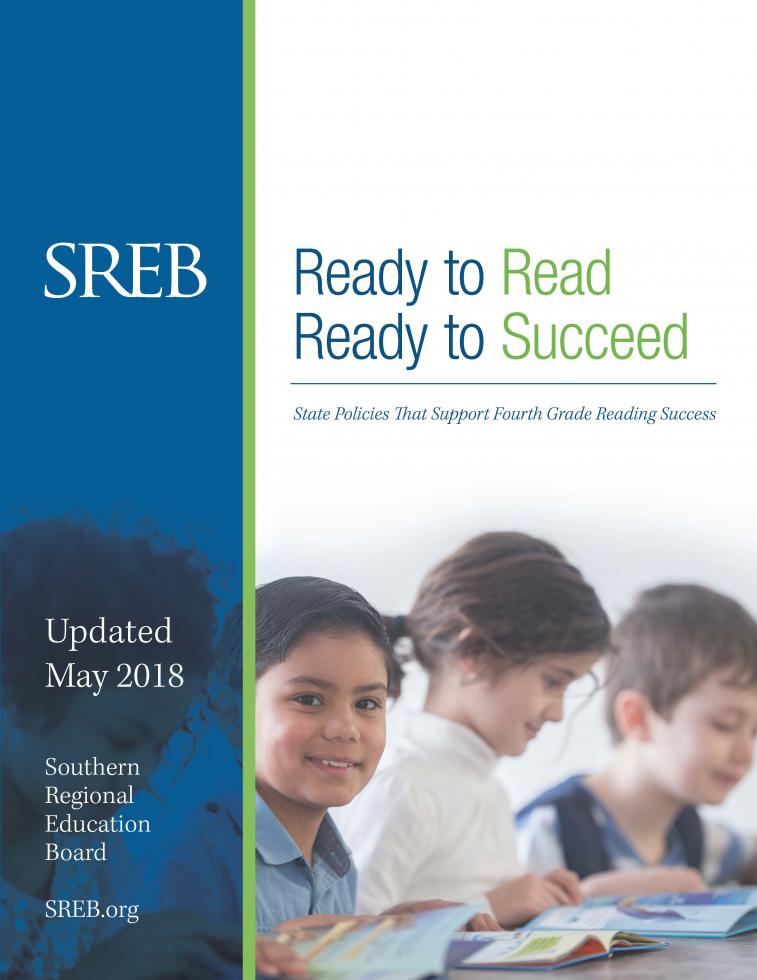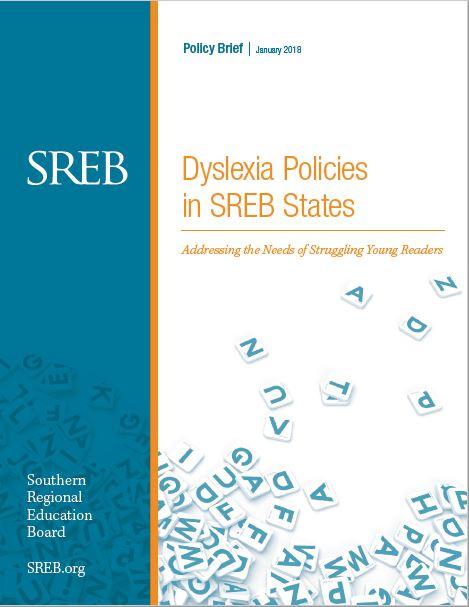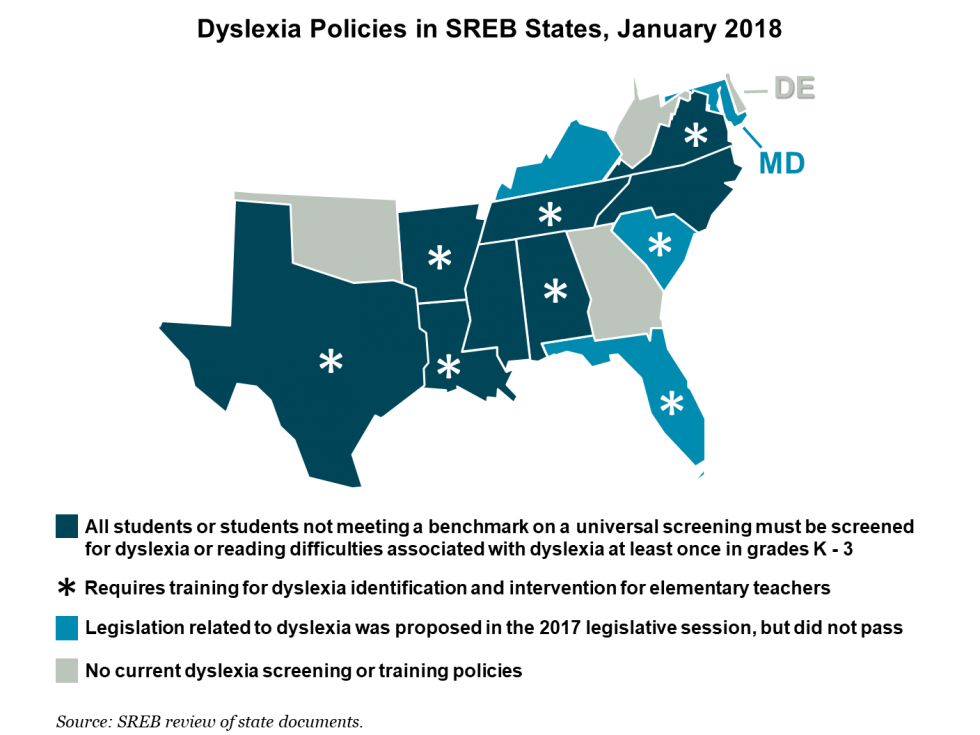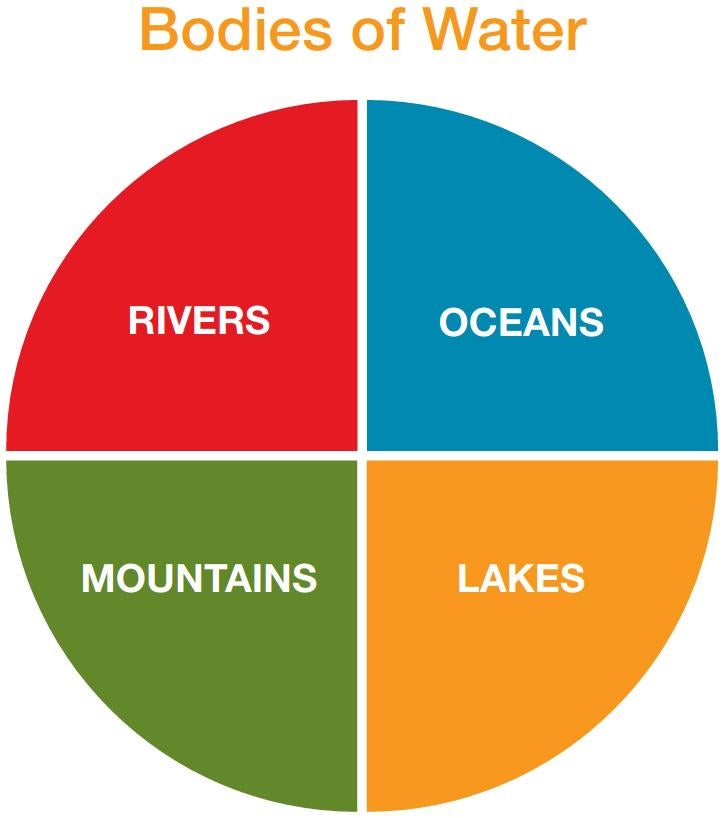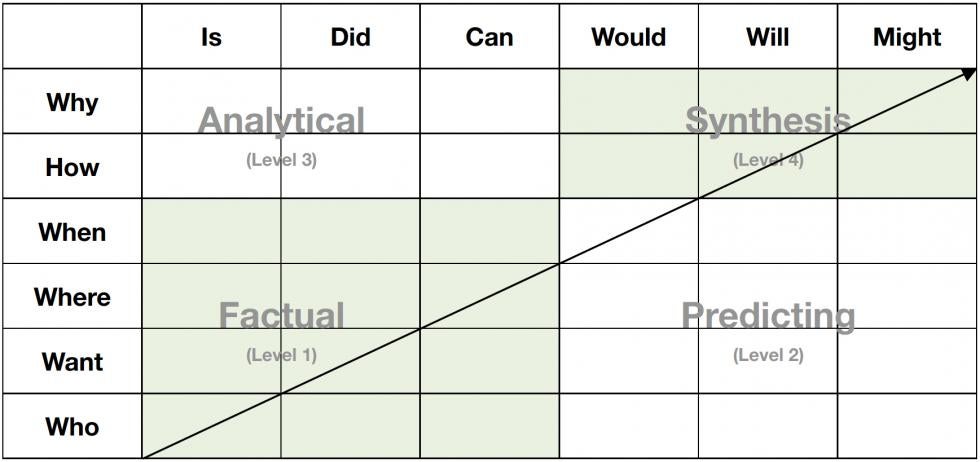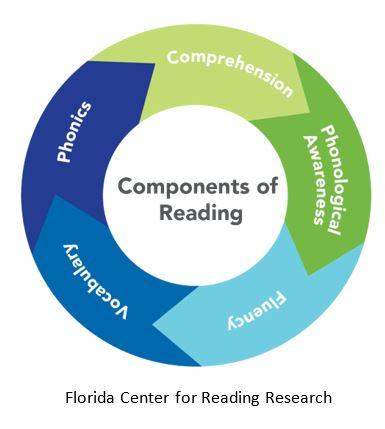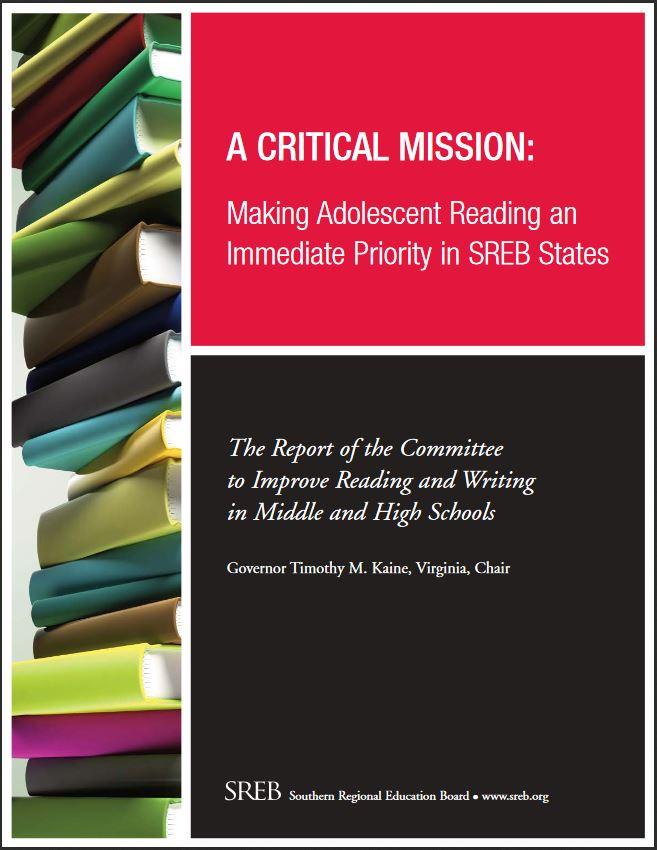Topic: Longitudinal Literacy
Longitudinal Literacy
Reading is the foundation for all learning. Research shows that students who are not reading proficiently by the end of third grade are much more likely to face poor academic outcomes. SREB provides data, research and recommendations for states and schools on how to improve reading instruction in elementary school and continue building those skills in middle and high school.
Readiness Courses in Literacy
 SREB has been working with states
to improve college and career readiness for over a decade. In
2013, we partnered with state leaders and master teachers to
co-develop transitional literacy and mathematics curricula that
prepare at-risk students for the rigors of challenging high
school and postsecondary course work.
SREB has been working with states
to improve college and career readiness for over a decade. In
2013, we partnered with state leaders and master teachers to
co-develop transitional literacy and mathematics curricula that
prepare at-risk students for the rigors of challenging high
school and postsecondary course work.
Our Ready for High School and Ready for College courses are designed to help struggling students increase their critical thinking, problem-solving and communication skills by engaging in challenging activities and assignments.
Powerful Literacy Instructional Practices
Lexile in SREB States
In early 2023, a state asked SREB which states in the region mention Lexile within Every Student Succeeds Act plans or on state websites. This report presents data from those states.
Ready to Read, Ready to Succeed
State Policies that Support Fourth-Grade Reading Success
States continue to make changes to educator preparation policies and exam requirements for reading. To help legislators who may use this report as a reference, SREB updated Table 2 on page 17 to reflect current state policies as of May 2019.
A bridge to college: Alabama students find success through SREB Readiness Courses
Every SREB state needs more students to complete two- and four-year college degrees and earn valuable career credentials.
But how can states build a stronger bridge for students from high school to college?
In partnership with SREB, Alabama’s high schools and community colleges have found a way. The strategy is helping more students succeed and avoid getting stuck in remedial education courses in college — one of the more intractable problems in higher education.
Dyslexia Policies in SREB States
Addressing the Needs of Struggling Young Readers
This brief lays out what researchers know about the learning differences associated with dyslexia, which reading interventions are effective for individuals with dyslexia, and what good state policies can mean for children and their families.
In February 2020 the policy table in Appendix C was updated to reflect policy changes through the 2019 legislative sessions.
DOWNLOAD BRIEF >
DOWNLOAD EXECUTIVE SUMMARY >
DOWNLOAD UPDATED POLICY TABLE
Repeating a Grade: How Well Does It Work?
Research Snapshot
This research snapshot 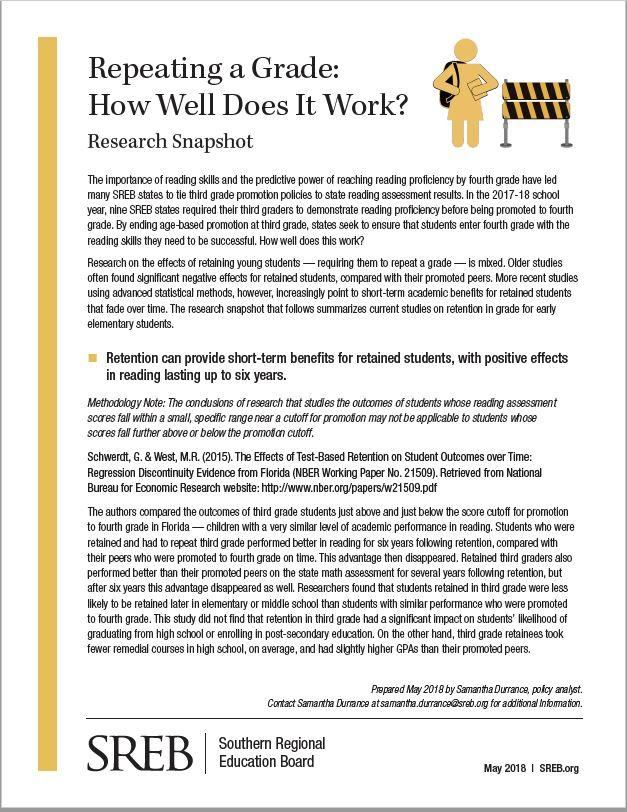 on retention policies examines what we know about retaining young students, from research on outcomes to how much states spend on additional years of schooling. The brief lists intervention policies in the nine SREB states that require third graders to show reading proficiency to be promoted to fourth grade.
on retention policies examines what we know about retaining young students, from research on outcomes to how much states spend on additional years of schooling. The brief lists intervention policies in the nine SREB states that require third graders to show reading proficiency to be promoted to fourth grade.
Don’t Be Afraid to Say “Dyslexia”
Acknowledging and identifying dyslexia is step one in helping struggling readers
Researchers estimate that dyslexia affects at least one in 10 people. As defined by the International Dyslexia Association, dyslexia is a neurobiological learning disability, unrelated to intelligence, characterized by differences in the way the brain processes language. These differences result in difficulties developing skills that are important for reading and writing. While it cannot be outgrown, individuals with dyslexia can learn strategies to help them overcome the unique challenges it presents.
Seven Literacy-Based Assignments for Social Studies Classrooms
Last year, while teaching at Lakeside Middle School in Anderson County, South Carolina, my colleague Keri Compton and I came up with seven strategies specifically for social studies teachers. These mini-tasks, based on our Literacy Design Collaborative (LDC) training, use hands-on activities to build confidence and help students reflect on their learning while they’re improving their reading and writing skills. Here they are:
People, Objects, Settings, Engagement and Relationships
Raise the Rigor
Strategies to Promote Reading Comprehension
As a middle grades social studies teacher in Florence School District 1 — an area of South Carolina along I-95 known as the “Corridor of Shame” for its poverty and low-performing students — I have a theory. I believe all students benefit from rigorous, literacy-based classroom instruction, and students from poverty benefit the most. The ability to read and understand complex texts is the best way to distinguish students who are college and career ready from those who are not.
Remember, rigor doesn’t mean hard. Rigor means challenge.
Math and Literacy Teaching Strategies Have Deep, Lasting Effect
Want to see where good teaching happens? Watch what students are doing in the classroom. Sounds obvious, maybe, but as SREB senior vice president Gene Bottoms says, “We observe teachers and what they’re doing all the time — but we miss a big piece of the puzzle if we don’t see what the kids are doing as a result.”
So SREB asked My Student Survey to see how our training in powerful literacy and math teaching tools is paying off in the classroom.
Are teachers prepared to teach reading?
Research shows a gap between what we know about reading and how teachers are prepared to teach it
Reading is the foundation for learning.
The research is clear: Students who are not reading proficiently by the end of third grade are much more likely to face poor academic outcomes. For this reason alone, we know it is incredibly important that children learn to read well early in elementary school and continue to build on those reading skills throughout the rest of school.
A Critical Mission
Making Adolescent Reading an Immediate Priority in SREB States
Report of the Committee to Improve Reading and Writing in Middle and High Schools
Nationwide, students in the middle grades and high school are failing to develop the reading and writing skills they need in order to meet higher academic standards. This major SREB report on adolescent literacy discusses the urgency of the problem in depth and presents specific solutions for SREB states based on the recommendations of the SREB Committee to Improve Reading and Writing in Middle and High Schools, chaired by Governor Tim Kaine of Virginia, the SREB Board chair. The report includes a message from SREB President Dave Spence and status reports on recent state actions on the issue.


